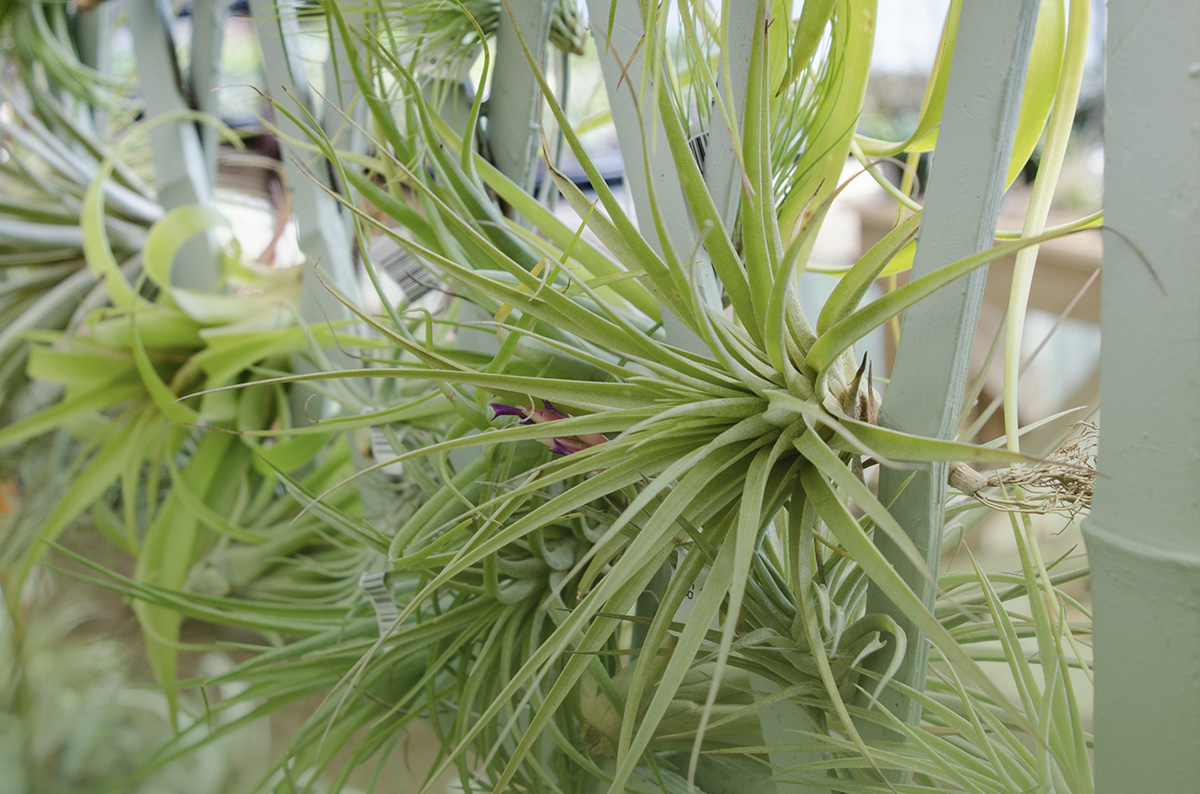
How Do I Care For My Tillandsia
Tillandsias seem to be in constant demand, especially colorful varieties or ones in bloom. Caring for these little plants can seem daunting considering that most other houseplants grow in a pot of soil. Tillandsias are epiphytes which means they grow on other plants, not in soil. They acquire nutrients and water from the air through trichomes on their leaves. Trichomes look like little, fuzzy white hairs with the naked eye but when they come in contact with moisture they swell up like sponges. The moisture is then absorbed by the plant. Some Tillandsias have more visible trichomes than others which indicates where that plant originates from. Fuzzy, silver-colored Tillandsias with lots of trichomes like T. tectorum originate from dryer regions and use those extra trichomes to help catch more moisture. Tillandsia bulbosa (one of my personal favorites) is smooth and green with trichomes that are not as visible which indicates that it grows in a more humid environment where moisture is not hard to come by. This information can help you determine how often your particular air plant needs to be watered. If it is very fuzzy and silver in color it can go longer without water and probably take a good bit of sunlight. Trichomes also help reflect light to protect plants from the sun.
So, what is the best way to water my Tillandsia? A combination of soaking and misting is the key to a healthy air plant. Assuming your Tillandsia is getting bright, indirect light, a good soak about once a week is ideal. Let your plant sit in a tub fully submerged with water for up to a few hours. If your Tillandsia lives inside in a dry environment, perhaps some addition misting would be beneficial. Some people like to keep their air plants outside under a covered porch or tree where the environment would be much more humid and therefor supplemental misting would not be necessary. About once a month you could add a liquid tillandsia fertilizer or fish emulsion to the water bath to give your plant some nutrients. When you take the plant out of the water bath be sure to shake off any excess water being held in the crevices. If the base of the plant stays wet it will rot, killing your Tillandsia. If your Tillandsia is in bloom, take care not to get the flowers wet. Instead of submerging you can dunk, mist or stick the plant under the running faucet.
If your Tillandsia has not bloomed yet, it may not be getting enough light or fertilizer. Be patient, a healthy Tillandsia will bloom eventually. Many people wonder what happens to the plant once the bloom dies. Each Tillandsia will only bloom once but afterwards baby tillandsias or “pups” will start to grow from the base of the plant. Once these pups are about half the size of the mother you can cut them away or leave them to grow in a clump. Continue to water and provide sunlight for your Tillandsia after it blooms to ensure it gets enough energy to form these pups. Eventually the mother plant will die as her pups continue to grow, but she will leave several new plants in her place!
Gain some more Houseplant Education

